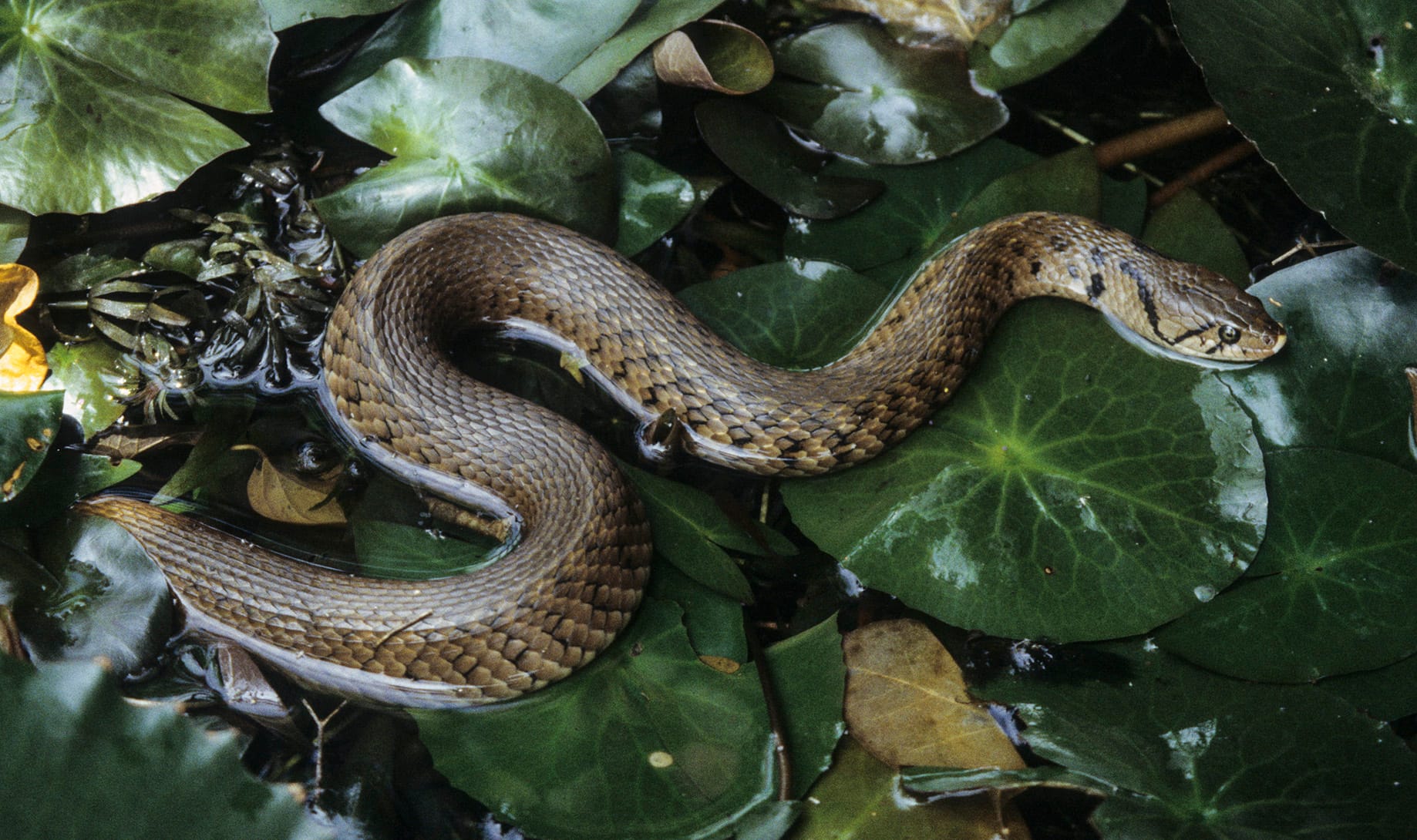Above . A photo of the maxillary bone and attached teeth from a twig snake in the genus Thelotornis. JCM
A forthcoming article discusses how the shape and structure of a snake’s teeth can be influenced by its diet and feeding behavior. Although teeth in many animals are known to be linked to their diet, this has not been studied much in snakes, which have a wide range of eating habits.
Seagal et al (2023) examined the teeth of 63 different species of snakes, representing a diverse range of diets and feeding behaviors. They used a combination of 3D geometric morphometrics and linear measurements to study the teeth’s shape and size.
Their results showed that the hardness and shape of the prey, as well as the environment in which the snake hunts, play a significant role in determining the shape and size of its teeth. Snakes with long, curved teeth with a thin layer of hard tissue are better adapted to maintain a grip on their prey, while snakes with short, stout, less curved teeth are better suited to withstand high or repeated loads.
While the relationship between diet and dental morphology is well-established in many vertebrates, the authors argue that snakes, with their specialized feeding behavior and apparatus, may not follow this pattern. However, the authors demonstrate that snake teeth exhibit a wide range of shapes, lengths, and curvatures that are associated with different prey properties and feeding ecologies. The study identifies two main tooth shapes: long and slender teeth, which are useful for gripping soft-bodied or bulky prey or prey that is found underwater, and short and robust teeth, which are better suited for hard or long prey that do not require penetration.
This study is the first to examine and compare the morphology of snake teeth across a large sample of species with different ecological niches. The authors hope that the findings will lead to further research into the mechanical properties of snake teeth, which could contribute to a better understanding of the evolution and biomechanics of vertebrate teeth.
This study highlights the diversity of tooth morphology in snakes which has been long overlooked and emphasizes the importance of understanding the functional implications of tooth shape to gain a better understanding of how teeth have evolved in different vertebrate species.
Citation
Segall M, Houssin C, Delapré A, Cornette R, Herrel A, Milgram J, Shahar R, Dumont M. Armed to the teeth: the underestimated diversity in tooth shape in snakes and its relation to feeding behavior and diet.













